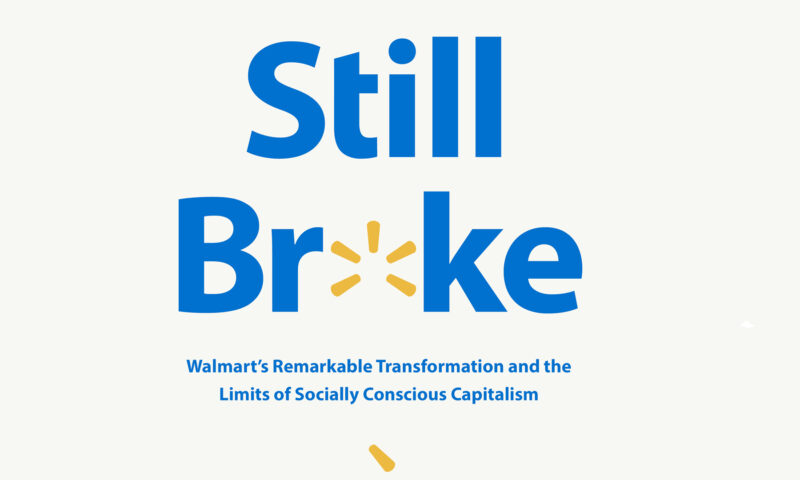
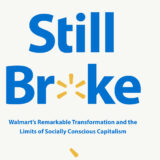
Author Rick Wartzman’s new book examines how improvements in pay by the retail giant fall far short of what society owes workers.
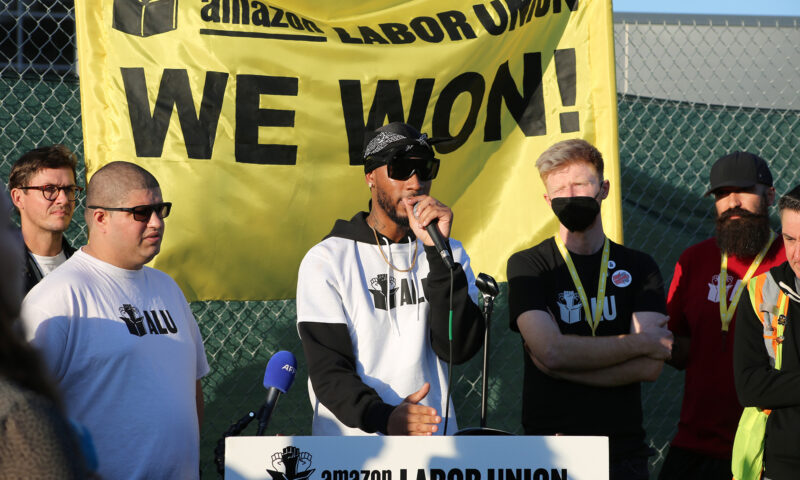
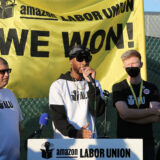
The improbable labor win is raising comparisons to thwarted efforts to organize workers in the early 2000s.


An estimated 60% of large employers use workplace monitoring tools, some of which can be used to chill organizing.


Co-published by Fast Company
Mass layoffs are never pleasant news. In America they are particularly disruptive, thanks to a meager safety net.

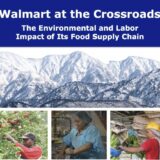
“With great power comes great responsibility.” It’s one of those truisms that’s been echoed in various forms throughout the ages, from the likes of Winston Churchill, Franklin D. Roosevelt and even the Spider-man comics. Unfortunately, powerful major corporations like Walmart don’t often take responsibility for their tremendous impact on America and the rest of the world. As Walmart opens its annual shareholder meeting on June 5, we at the Food Chain Workers Alliance urge stockholders and executives alike to consider our newly-released report, Walmart at the Crossroads, which examines the impact of Walmart’s food supply chain on labor and the environment.
Walmart, number one on the Fortune 500 list of American companies, has net sales totaling $473.1 billion. With foodstuffs making up 55 percent of its sales, this corporation controls 25 percent of grocery sales in the U.S. Consequently, Walmart’s actions and inactions reverberate through the food chain,
» Read more about: Walmart at the Crossroads: Live Better, Do Better for All of Us »
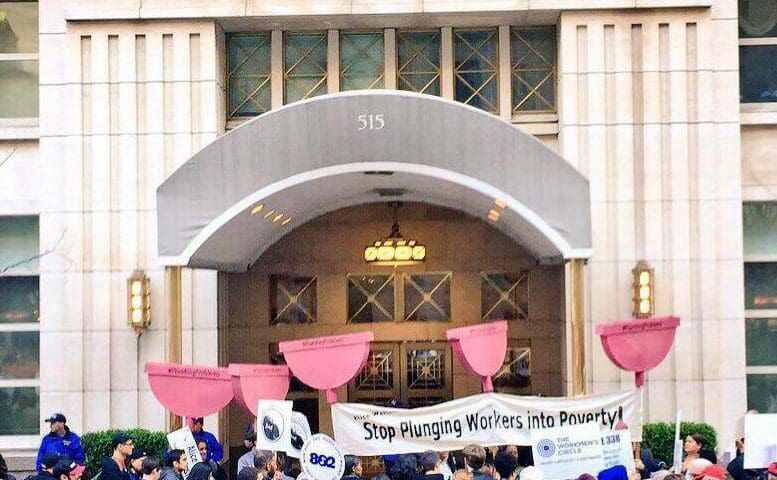
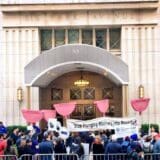
René Bobadilla had just started lunch on April 13 when he got a call from Walmart’s government relations office.
“I almost choked,” he says.
Bobadilla is the city manager of Pico Rivera and the government relations rep had just informed him that the local Walmart Supercenter was shutting down within hours and possibly for six months — due to a plumbing issue.
That meant 530 workers cut at Pico Rivera’s second-largest employer and a severe budget hit to the San Gabriel Valley city of 63,000. Sales tax from the Supercenter accounts for some 10 percent of city revenues — an estimated $1.4 million a year.
The nature of the problem is a mystery.
“They haven’t told us specifically — is it their main, do they have water coming out of their drain? I don’t know,” Bobadilla says.
The Pico Rivera store is one of five Walmart stores around the country suddenly closed due to vaguely defined plumbing problems.
» Read more about: Walmart's Pico Rivera 'Plumbing Problem' »
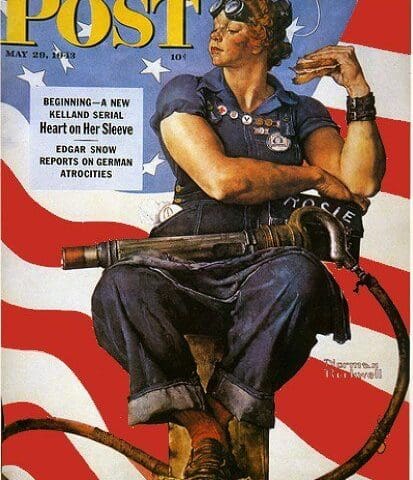
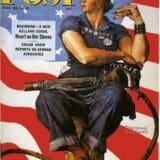
She was the perfect patriotic icon: Sassy yet dignified, brawny yet feminine – a massive rivet gun cradled on her lap, feet resting on a copy of Mein Kampf. And all the while she holds a sandwich as Old Glory ripples in the background. Mary Doyle Keefe, a Vermont telephone operator who posed for Norman Rockwell’s immortal Rosie the Riveter painting, first publicly seen on a 1943 Saturday Evening Post cover, died Tuesday at the age of 92. At the time of her brush with fame, Keefe was Rockwell’s neighbor and a little embarrassed that the artist had pumped iron into the painted arms of the petite 19-year-old.
Rosie the Riveter had too much whimsy and restraint for it to fade into kitsch or agitprop oblivion. Like J. Howard Miller’s equally famous “We Can Do It!” poster, with which it is sometimes confused,
» Read more about: ‘Rosie the Riveter’ Model Dies — Rockwell Painting Owned by Walmart Museum »
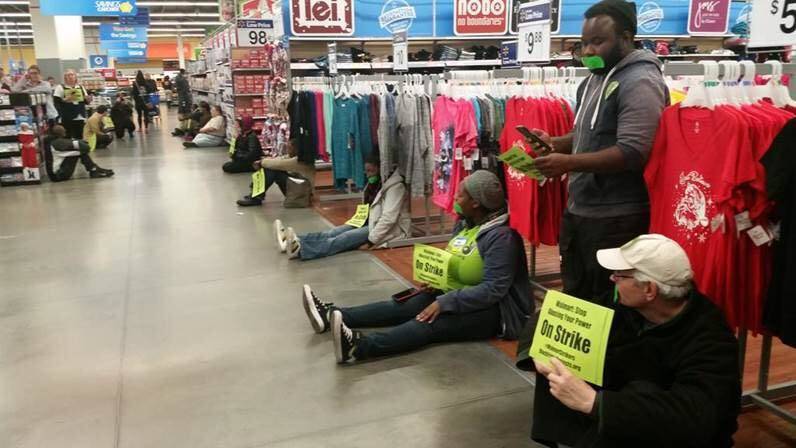
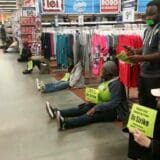
Walmart won’t pay its employees enough to afford Thanksgiving dinner, so they’re holding food drives for their employees. Seriously. It’s been reported that an Oklahoma City Walmart set up bins for underpaid associates to donate canned goods to other underpaid associates.
Walmart workers have a better idea: Pay us enough to put food on the table.
On Black Friday, the busiest shopping day of the year, tens of millions of Americans will travel to Walmart stores to look for holiday discounts on computers, toys and cellphones as well as to buy groceries and basic household items. But at more than 1,600 of Walmart’s 4,000 stores, shoppers will be greeted by Walmart employees handing out leaflets and holding picket signs — “Walmart: Stop Bullying, Stop Firing, Start Paying” and “We’re Drawing a Line at the Poverty Line: $25,000/year” — protesting the company’s abusive labor practices, including poverty-level wages, stingy benefits,
» Read more about: Black Friday Protests Push Back Against Walmart »
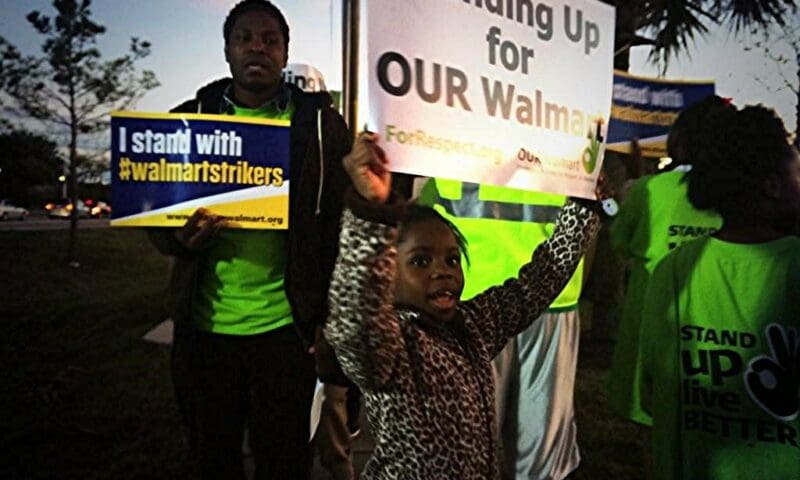

On November 13, Walmart associates in Los Angeles kicked off this year’s Black Friday strikes by sitting down in the aisles of the Crenshaw Walmart store to protest Walmart’s alleged intimidation. Later that evening 23 workers and community members were arrested at the Pico Rivera store.
But that’s just the beginning. This Black Friday, Walmart workers are striking again on the biggest shopping day of the year. Walmart associates are sick of struggling to get by while working for a company owned by the world’s wealthiest family. The Walton family that controls Walmart has more wealth than 43 percent of Americans combined, a perfect picture of everything that’s wrong with our unequal economy.
Walmart associates are striking to stop retaliation against workers who exercise their rights and to call on the company to publicly commit to paying $15 an hour and providing full-time work.
As Los Angeles and the Los Angeles Alliance for a New Economy (LAANE) work to raise the wage for all Angelenos,
» Read more about: Walmart Strikers: ‘All Out on Black Friday!’ »
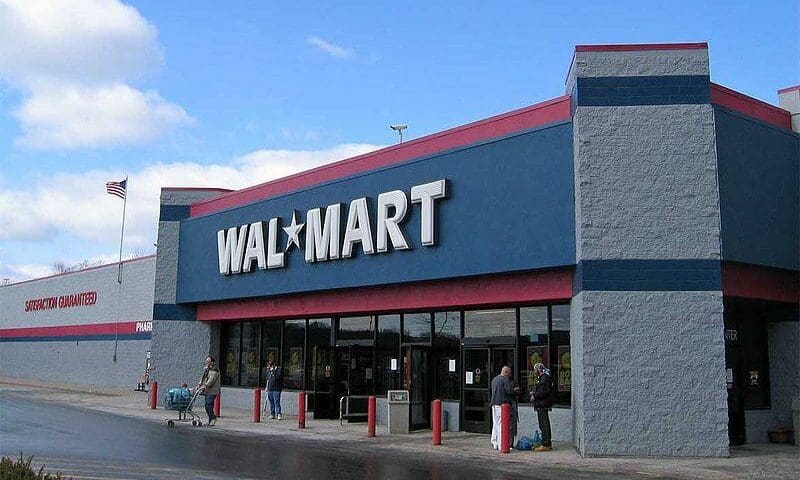

Whenever the subject of raising hourly pay to a livable level comes up in Los Angeles, you can expect two stalwart foes: The Chamber of Commerce and the Central City Association. They both represent business and they always argue that paying working people a wage they can live on will hurt business owners. I cannot recall a time they ever claimed anything else.
But now a new voice from the business community has surveyed the field of low-wage work and come up with a conclusion quite opposite the Chamber’s and the Association’s. A member of the faculty at MIT’s Sloan School of Management (named after a former president of General Motors, no less) compared wages and company results among sales people and check-out clerks. These jobs happen to rank one and two in the number of employees in the country, and they are notorious for low pay, part-time hours and oppressive working environments.
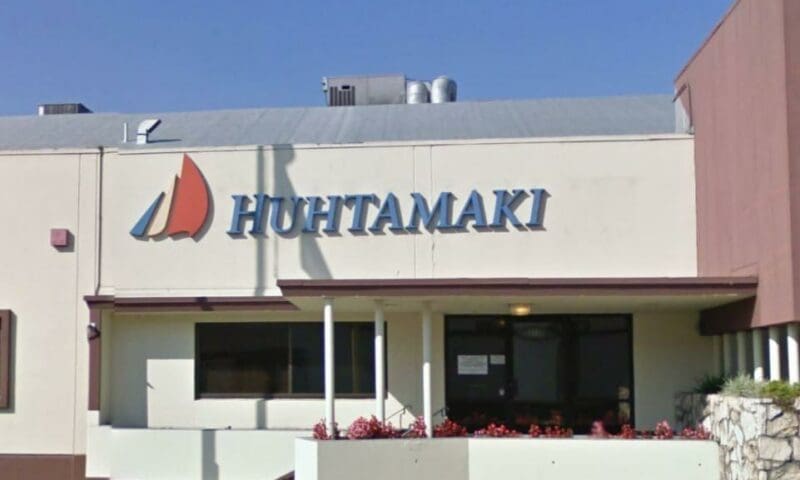
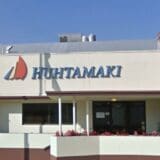
(Note: The following opinion piece was written by a single mother of two children who fears losing her job. For this reason her name has been withheld.)
What does “Made in America” mean to you? For consumers, it means a quality product. For workers, it means a good paying job and an opportunity to achieve the American Dream. Yet “Made in America” can also stand for opportunity to exploit workers under harsh conditions and unfair wages. That’s what it means in the manufacturing plant where I work in Commerce.
I’ve worked three years for Huhtamaki, a Finnish-owned packaging manufacturer located in the Los Angeles area. We make ice cream containers and other products for Walmart. And the job, it’s just not what people are talking about when they talk about investing in new manufacturing jobs in our country.
As a single mother of two, making ends meet is hard.


There was a time, not all that long ago, when a supermarket job was seen as a turnstile to middle-class security, especially if the job was in a unit of the old Retail Clerks Union. Today, however, even that seemingly bedrock bridge to the American Dream is vanishing into thin air as massive retail hypermarkets and nonunion grocery stores knock down wages and job benefits. A survey released this month confirms the acceleration of this trend and identifies even more problems that lie ahead for California’s grocery workers.
Shelved: How Wages and Working Conditions for California’s Food Retail Workers Have Declined as the Industry Has Thrived, commissioned by the Retail Clerk’s successor, the United Food and Commercial Workers union, was conducted by Saru Jayaraman of the University of California, Berkeley’s Food Labor Research Center. Her work here reveals a familiar pattern present among nearly all U.S.
» Read more about: Survey: Grocery Workers’ Vanishing Horizons »


In an excruciating example of bad timing, the Los Angeles chapter of the NAACP was scheduled to bestow its Lifetime Achievement Award to Donald Sterling, owner of the Los Angeles Clippers basketball team, at its May 15 banquet. Sterling is now under fire for racist comments caught on a recording that surfaced on the TMZ website. Even President Barack Obama weighed in, condemning Sterling’s remarks as “incredibly offensive.” The NBA is now investigating Sterling’s remarks and could invoke sanctions, including removing him as Clippers’ owner.
Embarrassed by the controversy, the NAACP announced Sunday morning, via Twitter, that is was withdrawing the award, which was to be presented at the Millennium Biltmore Hotel in Los Angeles as part of the celebration of the chapter’s 100th anniversary. The NAACP also plans to honor Rev. Al Sharpton and Los Angeles Mayor Eric Garcetti — as well as Walmart’s local charity and political operative and a top Fed Ex executive —


Last year Walmart commissioned a study on itself, and now its findings can be revealed: Walmart is the greatest thing since penicillin. More specifically, the study sees the chain-store titan’s widening footprint on America’s retail landscape as a gift for the communities lucky enough to have a Supercenter land on them.
The research, conducted by the Hatamiya Group, a Davis-based firm owned by Lon Hatamiya, is predicated on a comparative analysis of taxable retail sales and retail business permits, and reaches two conclusions: “On average,” California communities with Walmart Supercenters in them have fared better economically than those without them.
Of course, while it may be difficult to name a community that doesn’t have a Walmart in it, California is a very large state and has places where even Walmart won’t tread – economic no-go zones that have been especially hard-hit by the recent recession and slow recovery.
» Read more about: Walmart’s New Research: A Flattering Self-Portrait »
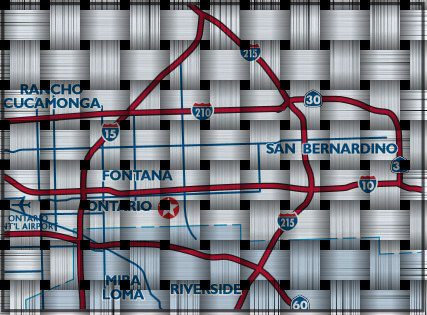

(This article was reported in partnership with the Investigative Fund of the Nation Institute. It first appeared on The Nation’s website and is republished with permission.)
The call from the temp agency comes in late October. I’ve passed the drug test, cleared the background check, sat down for a quick interview—“Can you lift fifty-pound boxes?”—and completed a worksheet of basic math problems. Now there’s a job. A warehouse just outside the city of Ontario, about forty miles east of Los Angeles, needs more bodies to meet the holiday crush.
They do work for Walmart, Best Buy, “all sorts of big companies,” says the female voice on the line. Orientation starts at 8:15 am; pay is $9 an hour. “Make sure you’re early.” Before hanging up she repeats the order. “Be early.”
On an overcast Tuesday, I pull into the parking lot,
» Read more about: Eyewitness: Working Inside an Inland Empire Warehouse »


Bursting out of ourselves,
rush of coat and elbow,
we rode over, over
Jimmy Damour, standing guard in the dawn —
the door yanked from its socket.
We rode as though on horseback
in the direction of our wanting.
They say you lay in a sleep of bronze
on the white linoleum,
while we shopped for TVs.
You a stone in the current of us.
Like water, indifferent, serpentine,
we carved the earth,
with our urgent business.
They say you shielded a pregnant woman
with your body,
that beneath the weight of us
she heard the grinding of her own teeth.
I’d like to say that because of you, Jimmy,
we make do with less.
It would suit my miserly heart
to cut, extract, leave out, whittle
down to the essential quart
of milk and sack of beans
to sit hearthside with this set of hands,


For a list of Black Friday actions planned nearest you, go to https://blackfridayprotests.org/
» Read more about: Walmart Braces for Black Friday Protests Today »


» Read more about: Happy Thanksgiving — Eat (Not Shop) Till You Drop! »
On the face of it, a report that Walmart has yet to cough up the $7,000 fine it owes the government over an infamous 2008 Black Friday tragedy should be shocking. In fact, Walmart is not simply behind in its payment, it is actively fighting the fine. The incident in question took place when Jdimytai Damour, a store employee at a Long Island Walmart, died during a shopper stampede – a literal “doorbuster” – during which hundreds of people poured through the store’s unhinged glass doors before the dawn of the morning after Thanksgiving.
“Should be shocking,” because somehow we’ve become so used to hearing about the retail giant’s outlandish and dangerous obsession with profits that such news doesn’t surprise many people. Writing in the Huffington Post, Dave Jamieson noted:
For a company with sales of $466 billion last fiscal year, the $7,000 fine from the Occupational Safety and Health Administration represents little more than a single store’s rounding error.


This Friday, the busiest shopping day of the year, tens of millions of Americans will travel to Walmart stores to look for holiday discounts on computers, toys and cell phones as well as to buy groceries and basic household items. But at more than 1,500 of Walmart’s 4,000 stores, shoppers will be greeted by Walmart employees handing out leaflets and holding picket signs — “Walmart: Stop Bullying, Stop Firing, Start Paying” and “We’re Drawing a Line at the Poverty Line: $25,000/year” — protesting the company’s abusive labor practices, including poverty-level wages, stingy benefits and irregular work schedules that make it impossible for their families to make ends meet.
The Black Friday rallies and demonstrations represent a dramatic escalation of the growing protest movement among employees of America’s largest private employer. But they also represent the vanguard of a sharp challenge to the nation’s widening economic divide and the declining standard of living among the majority of Americans.